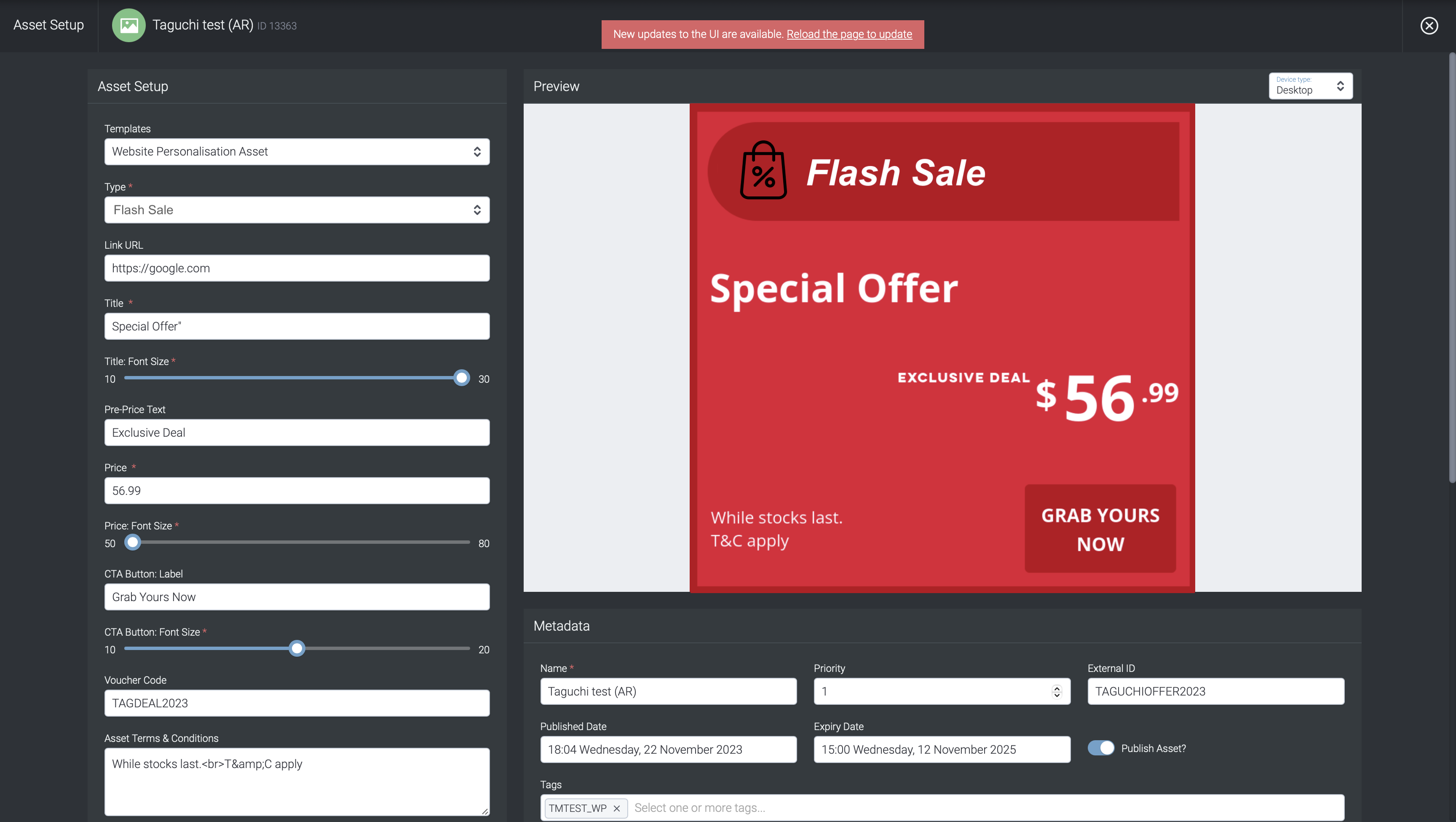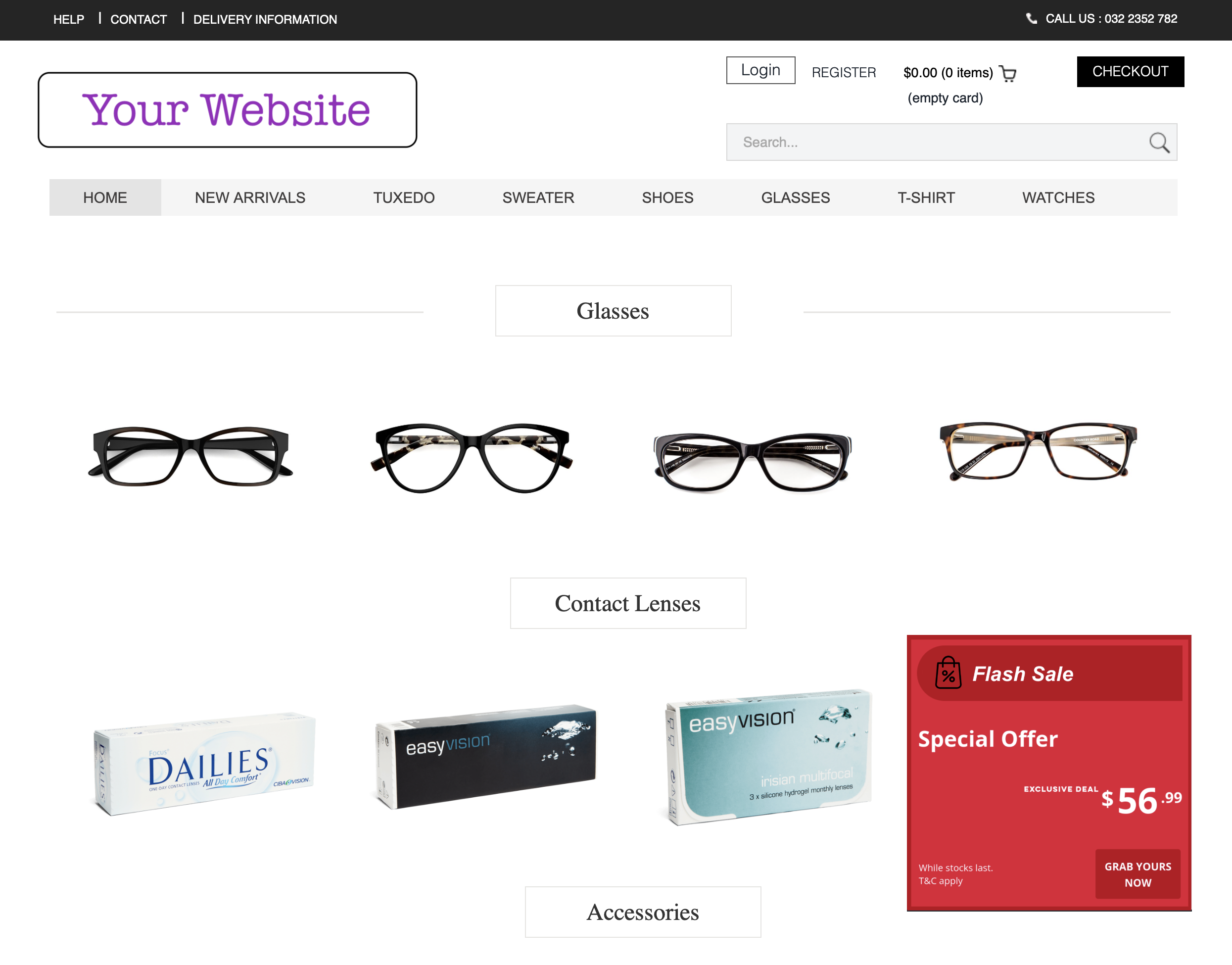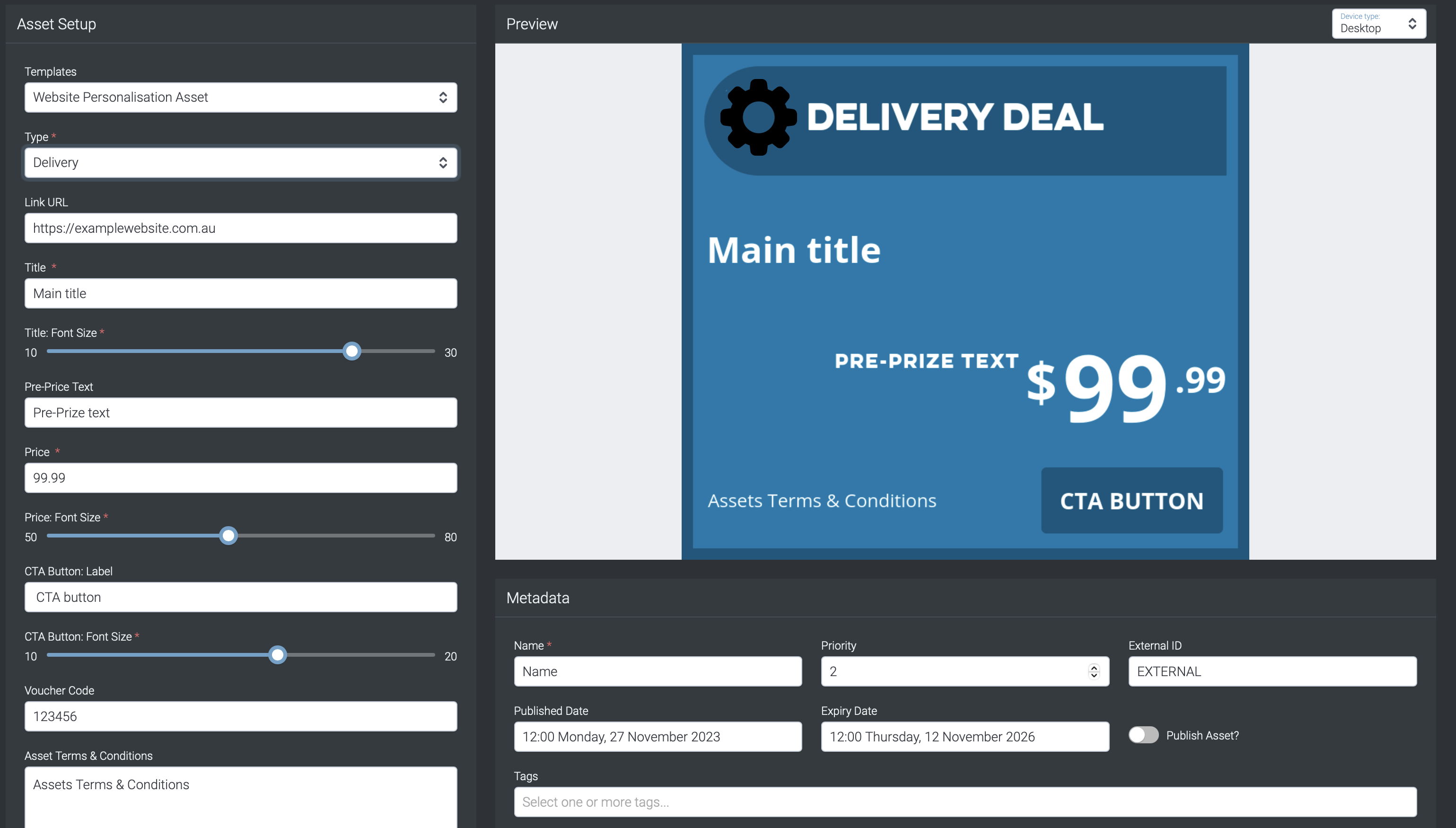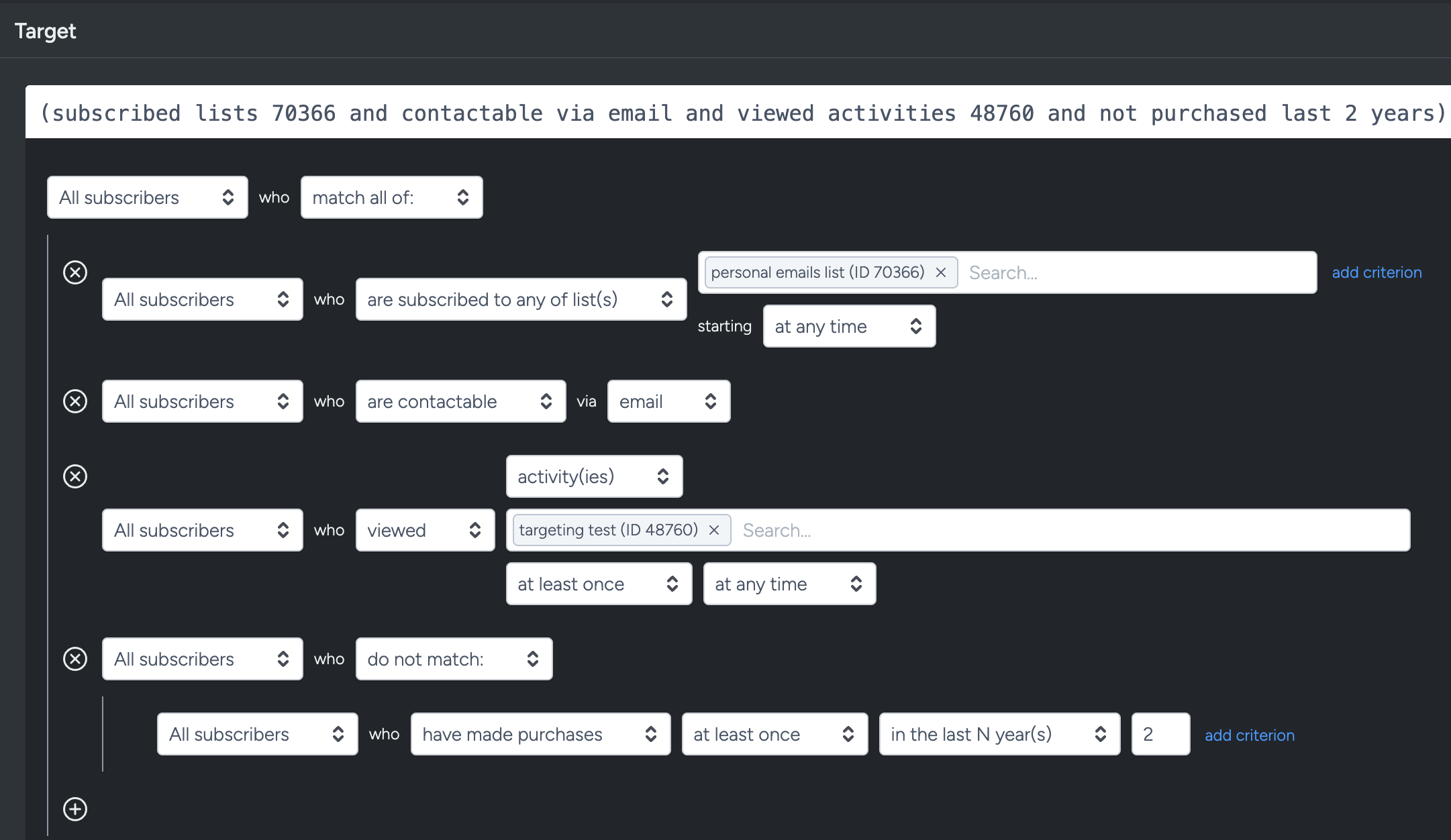- Support Home
- Knowledge Base
- Campaigns And Activities
- Personalization
- Guide to Implementing Website Personalization with Taguchi's Dynamic Asset Library.
Guide to Implementing Website Personalization with Taguchi's Dynamic Asset Library.
In the digital age, Personalization is not just a luxury; it's an expectation. Visitors to your website crave content that resonates with their specific needs and preferences. Enter the realm of website personalization—a strategy that transforms generic webpages into personalized experiences.
By capitalizing on the capabilities of Taguchi's Dynamic Asset Library, you can craft webpages that adapt in real-time to reflect the interests, behaviors, and history of each visitor. This guide will walk you through the process of using this innovative tool to create a website that not only attracts visitors but engages and converts them.
Enhancing User Experience through Personalization
Website Personalization involves adjusting the content, design, and offers on your website to align with individual user profiles. By using Taguchi's Dynamic Asset Library, you can dynamically alter webpage content to display personalized messages, promotions, and images, ensuring a unique experience for each user. This method of customization goes beyond mere aesthetics—it's about creating meaningful interactions that boost engagement and conversion rates.


Use Cases
Re-engaging Dormant Customers: Use personalized flash sale banners to attract customers who haven't made a purchase in over 180 days. By analyzing customer data, you can identify and target this segment with enticing offers that reignite their interest in your brand.
First-Time Visitor Welcome: Identify new visitors to your website and display a welcoming banner that offers a first-time buyer discount. This can make a strong first impression and encourage immediate engagement.
Up-Sell and Cross-Sell Opportunities: Display personalized product recommendations based on the visitor's browsing history, encouraging them to consider additional items that complement their interests.
Abandoned Cart Recovery: If a user has left items in their shopping cart, you can display a dynamic asset reminding them of their unfinished purchase, perhaps offering a time-limited discount to complete the transaction.
Boosting Online Payments: Encourage cash-paying customers to switch to online payments by offering a $2 discount. Display a personalized images with a unique coupon code directly on your site for eligible customers, simplifying the transition to digital transactions.
Utilizing Taguchi’s dynamic asset targeting expressions allows for precise engagement with specific user groups. By populating personalized assets in response to user behavior and profiles, these targeted strategies enhance relevance, drive conversions, and foster loyalty.
Contact Taguchi Support if you would like to incorporate this template feature into your organization.
Setting up the Personalization Asset
Refer to this article for instructions on how to set up Dynamic Assets: Setting Up Dynamic Assets in Taguchi.
Your dynamic asset could appear as shown below once it is set up according to your customization preferences.

The Importance of Targeting
- Effective targeting is crucial within the Dynamic asset to be able to provide personalized content to subscribers.
- For instance, you might target users who haven't purchased in the last three weeks with {{not purchased last 3 weeks}}
- Or customers with multiple abandoned carts using {{not abandoned activities count>=3}}.

Send request to endpoint
To retrieve these personalized assets from the backend, an HTTP GET request should be made to the content endpoint at https://[instance-name].taguchimail.com/content/. Follow these steps for a successful request:
- Request URL: Send the request to https://[your-instance-name].taguchimail.com/content/.
- Required parameters are:
- organization_id: should be the ID of the organization from which assets are to be retrieved
- tag: only assets with this tag will be retrieved; multiple tag parameters may be provided, in which case all assets matching any of the specified tags will be retrieved
- Additionally, one of the following sets of parameters is required, unless a Taguchi tracking cookie is submitted with the request:
- subscriber_id and subscriber_hash: the Taguchi ID and hash of the subscriber for which the personalized assets should be retrieved
- subscriber_event_id and subscriber_hash: the Taguchi subscriber event ID and subscriber hash for which the personalized assets should be retrieved
- email_hash: the SHA256 hash of the email address of the subscriber profile for which personalized assets should be retrieved
Successful request
In the event of a successful request, the API will return an array of asset objects, each containing the following fields that align with the Taguchi asset UI:
- priority: numbers format
- tags: array of strings
- global: boolean (indicates whether or not the asset is targeted to the individual subscriber using the target expression field)
- content: arbitrary JSON object with structure based on the asset's template type
- template: string format
- ref: string or null format
- id: number format
Unsuccessful request
In the event of an unsuccessful request, an error object is returned with the following fields:
- string: the HTTP reason field corresponding to the status code (e.g. "Bad Request")
- number: the HTTP status code (e.g. 400)
- string: expanded reason for the error (e.g. "No tag specified")
Note that the API returns arbitrary JSON content for each asset. It's assumed that the website code will format the JSON content appropriately for display, such as creating HTML based on the JSON content and adding it to the page DOM. This avoids the need for iframes. Optionally, this code can also utilize the tracking endpoint (e.g. https://[your-instance-name].taguchimail.com/t/wa), which accepts the same identification parameters as this endpoint, to log the assets displayed to the customer.
If you have additional queries or require further assistance regarding website personalization, do not hesitate to reach out to Taguchi Support.
